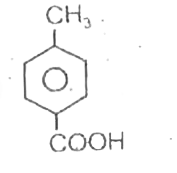In the following identify the compounds/reaction conditions represented by the alphabets (A),(B), and (C) :
C6H5COOHPCl5−−→(A)NH3−−→(B)P2O5−−→C6H5CNH2/Ni−−−→(C).
Step by step video, text & image solution for In the following identify the compounds/reaction conditions represented by the alphabets (A), (B), and ( C) : C_(6) H_(5) COOH overset(PCl_5)rarr (A)overset(NH_(3)) rarr (B) overset(P_2 O_5)rarr C_(6) H_(5) CN overset(H_2 //Ni)rarr (C). by Chemistry experts to help you in doubts & scoring excellent marks in Class 12 exams.
Updated on:21/07/2023Topper's Solved these Questions
- CARBOXYLIC ACID AND THEIR DERIVATIVESBOOK - IIT-JEE PREVIOUS YEAR (CHEMISTRY)CHAPTER - CARBOXYLIC ACID AND THEIR DERIVATIVESEXERCISE - (Topic II) OBJECTIVE QUASTION
1 Videos
- CARBOXYLIC ACID AND THEIR DERIVATIVESBOOK - IIT-JEE PREVIOUS YEAR (CHEMISTRY)CHAPTER - CARBOXYLIC ACID AND THEIR DERIVATIVESEXERCISE - Subjective Questions
4 Videos
- CARBOXYLIC ACID AND THEIR DERIVATIVESBOOK - IIT-JEE PREVIOUS YEAR (CHEMISTRY)CHAPTER - CARBOXYLIC ACID AND THEIR DERIVATIVESEXERCISE - CHAPTER TEST
3 Videos
- BIOMOLECULES AND CHEMISTRY IN DAILY LIFEBOOK - IIT-JEE PREVIOUS YEAR (CHEMISTRY)CHAPTER - BIOMOLECULES AND CHEMISTRY IN DAILY LIFEEXERCISE - Chapter Test
9 Videos
- CHEMICAL AND IONIC EQUILIBRIUMBOOK - IIT-JEE PREVIOUS YEAR (CHEMISTRY)CHAPTER - CHEMICAL AND IONIC EQUILIBRIUMEXERCISE - INTEGER_TYPE
1 Videos
Similar Questions
In the following indentify the compounds/reaction conditions represented by the alphabetes C, D, E:
C6H5COOHPCl5−−→CNH3−−→DP2O5−−→C6H5CNH2/Ni−−−→E
View SolutionIn the following, identify the compounds/reaction conditions represented by the alphabets (A),(B), and (C).
H3C−CH=CH−CHONaBH4−−−−→(A)HCl−−→ZnCl(B)KCN−−→H+(C).
View Solution
Knowledge Check
In a reaction,
(A)NH3−−→(B)Heat−−→(C)P2O5−−→C2H5CN
(A), (B) and (C) are:ACH3COOH,CH3COONH4andCH3CONH2BCH3COCl,CH3CONH2andCH3COONH4CC2H5COOH,C2H5COONH4andC2H5CONH2DC2H5CONH4,C2H5CONH2andC2H5COOHIn the reaction sequence :
C2H5OHPBr3−−→AKCN−−→BH2O+−−−→C
C is :AAcetic acidBAcetamideCPropionic acidDEthylamineSOCl2−−−→(A)KCN−−→(B)H+−−→(C ), the compound (C ) is
 A
A B
B C
C D
D
C2H5OHPCl5−−→(A)KCN−−→(B)H3O+−−−→(C)NH3−−→(D)heat−−→(E)
View SolutionWrite the product ? C6H5COOHSOCl2−−−→(A)Pd/BaSO4−−−−−−→(B)(i)HCN−−−−−−−→(ii)H3O⊕C
View SolutionThe product D of the reaction CH3ClKCN−−→(A)H2O−−→(B)NH3−−→(C)Δ−−→(D) is
View SolutionC6H5NH2Na2Cr2O7−−−−−→H+?
View SolutionIn the given reaction sequence C6H5−COOHSOCl2−−−→(A)NH2OH−−−−→(B)NaOH/Δ−−−−−−→(C),
'C' will be
View Solution
